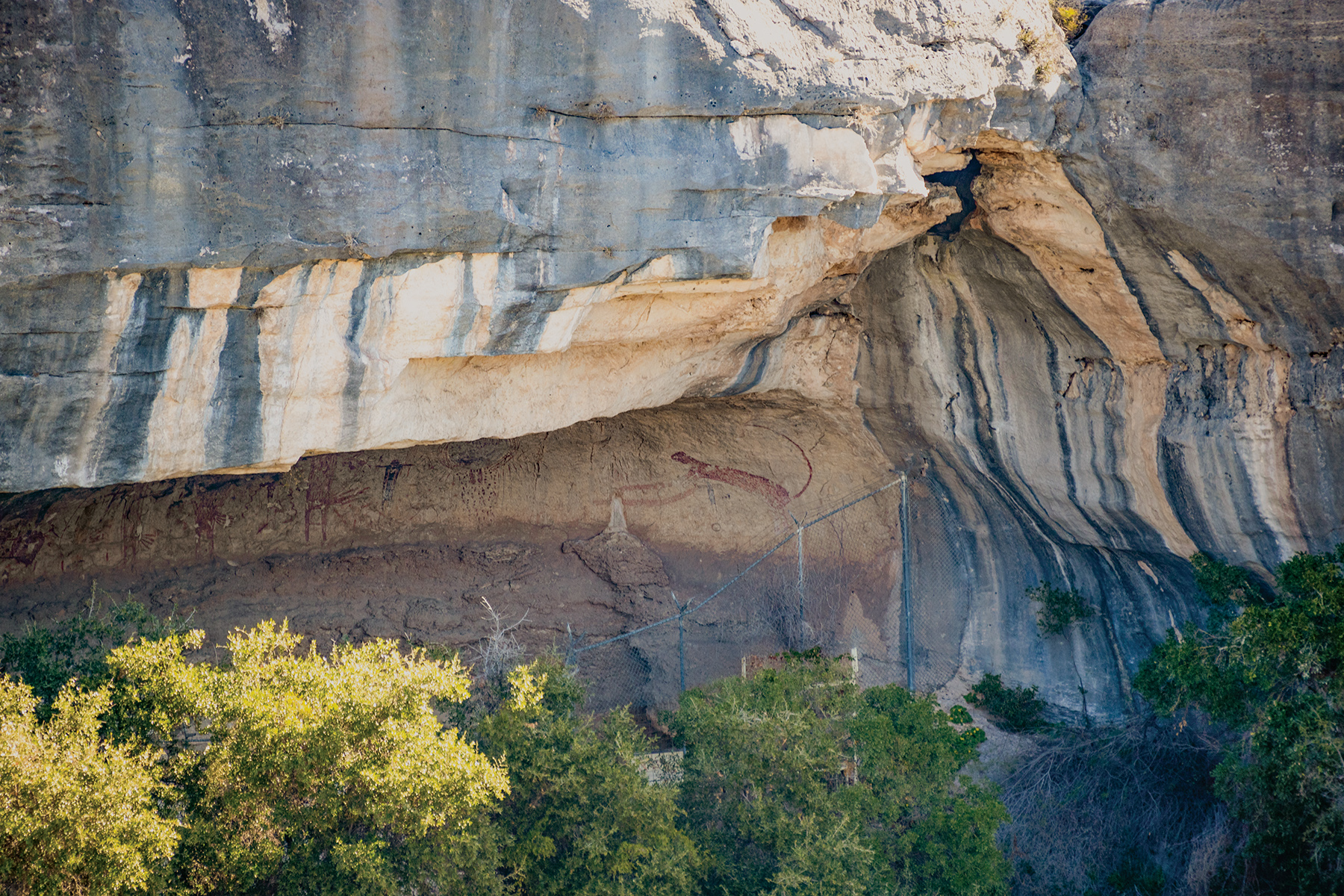
STATE PARK WONDER
History on Cave Walls
Seminole Canyon pictographs reveal clues to an ancient culture.
In Panther Cave, a large, red-painted mountain lion leaps across the rear wall of the shelter. The big cat appears to be captured mid-pounce, with its front legs stretched out and tail raised high.
The rock painting at Seminole Canyon State Park is one of the region’s most famous pictographs. The Lower Pecos Canyonlands, where the Pecos and Devils rivers meet the Rio Grande, contain hundreds of such rock art sites and are one of the most significant archaeological regions in North America.
“The region has been continuously occupied for 10,000 years, and about 5,000 years ago, the people who lived here decided to start painting,” says Seminole Canyon Superintendent Stephanie Croatt. “They painted on the walls of these rock shelters that are in the cliff sides of the canyons. They made intricate paintings, some of which are still visible today.”
Seminole Canyon State Park protects several globally significant pictograph sites, including Panther Cave and Fate Bell Shelter. Fate Bell is one of the largest rock shelters in the Lower Pecos, and it contains some of the best documented and best preserved pictographs of the Pecos River style.
Seminole Canyon offers tours of the Fate Bell shelter several times a week.
“Among the state parks in Texas, this is an absolutely unique site,” Croatt says. “Our reason for being here is to be one of the most accessible places where people can see these rock art sites and learn about their significance. We provide the most opportunity and the most affordable opportunity to see these sites.”
The rugged canyons contain a rich cultural legacy. Indigenous tribes concocted a paint using minerals, animal fat and sotol roots and produced paintings of animals, people, shamanistic rituals and creation stories. Some figures are human; some are animals such as deer and mountain lions; and some are geometric patterns such as lines and dots.
“Their purpose was more than likely to provide information to further cultural traditions,” Croatt says.
Though the real meanings of the images can only be guessed, ongoing archaeological and artistic analysis has revealed clues. The Shumla Archaeological Research & Education Center was created to preserve and interpret Lower Pecos rock art. At Seminole Canyon, Shumla has been creating databases of figures, identifying characteristics of sites, looking for themes and motifs in artwork and producing permanent records of the sites through high-resolution images.
The red, black, yellow and white paintings offer important information about an ancient and long-lasting culture.
“We like to say this is the oldest library in North America,” Croatt says.
Maegan Lanham | TPWD
» Like this story? If you enjoy reading articles like this, subscribe to Texas Parks & Wildlife magazine.

